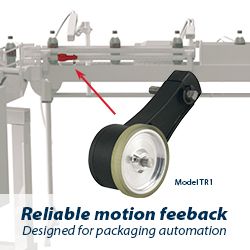Voodoo Automates 3D Printing to Take on Injection Molding
IIoT and Industry 4.0 are Transforming Manufacturing
Japan is moving towards Neo-Industrial Manufacturing - Formation of Flexible Factory Partner Alliance
Toward additive manufacturing
Is Just in Time Manufacturing for you?
Understanding Screw Threading
100x faster, 10x cheaper: 3D metal printing is about to go mainstream
How GE Appliances Built an Innovation Lab to Rapidly Prototype Products
The ioTrust Security Solution
Is Small Design Flaw Robbing Manufacturers of Valuable Time and Productivity in Milling Operations?
Smart Factories Will Deliver $500B In Value By 2022
The Importance of the Edge for the Industrial Internet of Things in the Energy Industry
Improving Efficiency in Counting Applications
The US Navy 3D printed a concept submersible in four weeks
Japanese companies form alliance to accelerate smart factories
Records 2356 to 2370 of 3073
First | Previous | Next | Last
Featured Product

Model TR1 Tru-Trac
Manufacturing and Automation - Featured Company

